Fjords, in the
Middle East?

COLIN SIMPSON
Racing Dolphins in a Dhow at the Strait of Hormuz
Musandam Peninsula, Oman
IF YOU hear the word “fjord” the chances are you think of a chilly waterway in Norway bordered on both sides by steep cliffs. Close your eyes and you can imagine seeing your breath as you exhale in the cold air.
On the other hand, the words “Middle East” usually conjure up images of sandy deserts seared by a blazing sun, plus camels and gleaming cities built with petrodollars.
So it might come as a surprise to learn that there are in fact fjords in the Middle East. A fjord is defined by National Geographic as a “long, deep, narrow body of water that reaches far inland… with steep walls of rock on either side… Fjords were created by glaciers.”
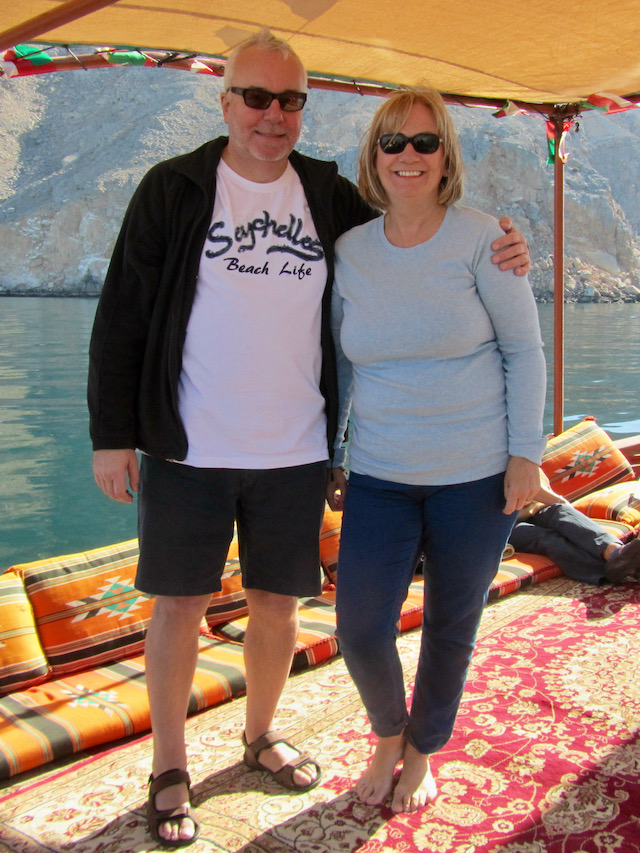
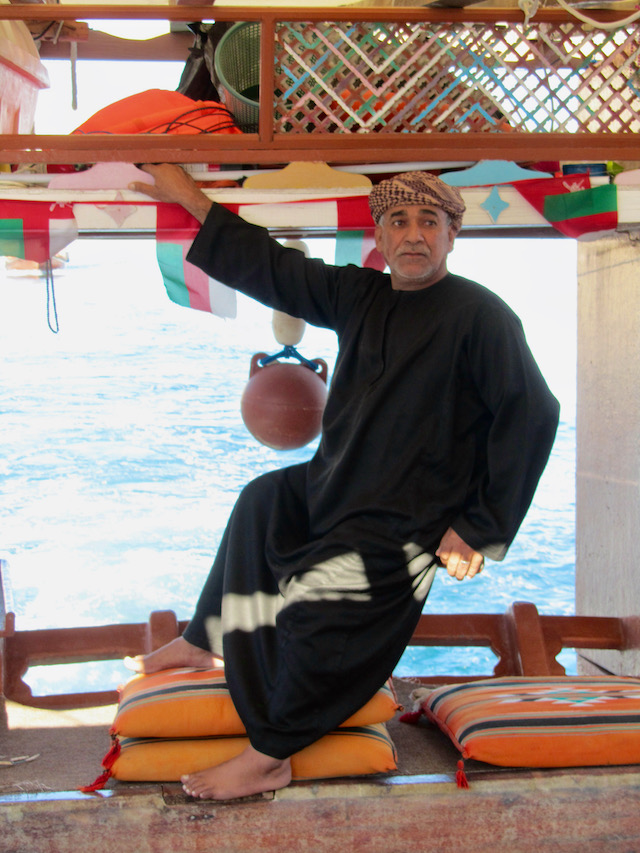
In addition to Norway, they are found in Chile, New Zealand, Canada, Greenland, and Alaska. The Middle East ones – known as khors – are in Musandam, Oman. Though you may not recognise the name, if you’ve watched the news or read a paper in the past 25 years you’ll know about this part of the world.
For Musandam is a peninsula that juts out into the Strait of Hormuz, the strategically vital waterway through which a fifth of the world’s oil passes on its way from the Gulf to world markets. On the opposite shore is Iran, and the waterway has frequently been a flashpoint amid the fluctuating relations between that country and the West.
But there’s a happier side to Musandam. It’s a popular diving area, though tricky currents mean it’s no place for beginners. And then there are those fjords, where day trippers and holidaymakers can race dolphins aboard a traditional Arabian vessel known as a dhow before going snorkelling or enjoying a relaxing lunch.
Popular Getaway
It’s a popular weekend getaway for expats in Dubai, and might also appeal to tourists who want to see more of the region than shopping malls and glitzy hotels.
To get there from Dubai you have to drive through four of the UAE’s other emirates – Sharjah, Ajman, Umm al Quwain and Ras al Khaimah. These, along with Fujairah, make up the Northern Emirates, the poor relations of Dubai and oil-rich Abu Dhabi. The final jolting stretch of the two-and-a-half hour journey takes you past cement factories on roads that have been churned up by the wheels of heavy trucks.

But as soon as you cross the border into Oman you find yourself on a fabulous coastal road with terrific views that takes you to Khasab, the main town. That’s where the dhows leave from, and you can go on a half-day excursion, or have a full day with lunch.
You’ll find the dhows lined up side-by-side in the port, and you’ll probably have to step across several to reach the one you’ve booked. Once everyone has arrived, the boat heads off. The cruises take you to Khor Ash Sham, the most easily accessible fjord from Khasab. It can get a bit crowded at times, like when several dive boats gather at the same site, though the dhows are attractive so this doesn’t spoil the experience.
The mood is relaxed, and we’ve always found the crews welcoming and keen to talk about the way of life in the remote peninsula. The scenery is striking as you head into the mouth of the fjord, with rock walls rising on either side that protect the waters of the inlet if the sea outside is rough.
Small Villages
We passed a number of small villages on the shore that were backed by imposing cliffs. A helpful English-speaking crew member explained that these could only be reached by boat, and the children were taken to Khasab to attend school each week before returning home at the weekend. Most of the villagers make their living from fishing. It was hard to imagine what it would be like to grow up and live in such a remote place, and difficult, also, to remember that Dubai’s gleaming towers were less than three hours’ drive away.
Then there were the dolphins! We spotted a few as we made our way through the fjord. After a while the captain lined the boat up towards one end of the waterway, then gunned the engine. As we sped along dolphins would approach and race alongside. It was a fun experience.
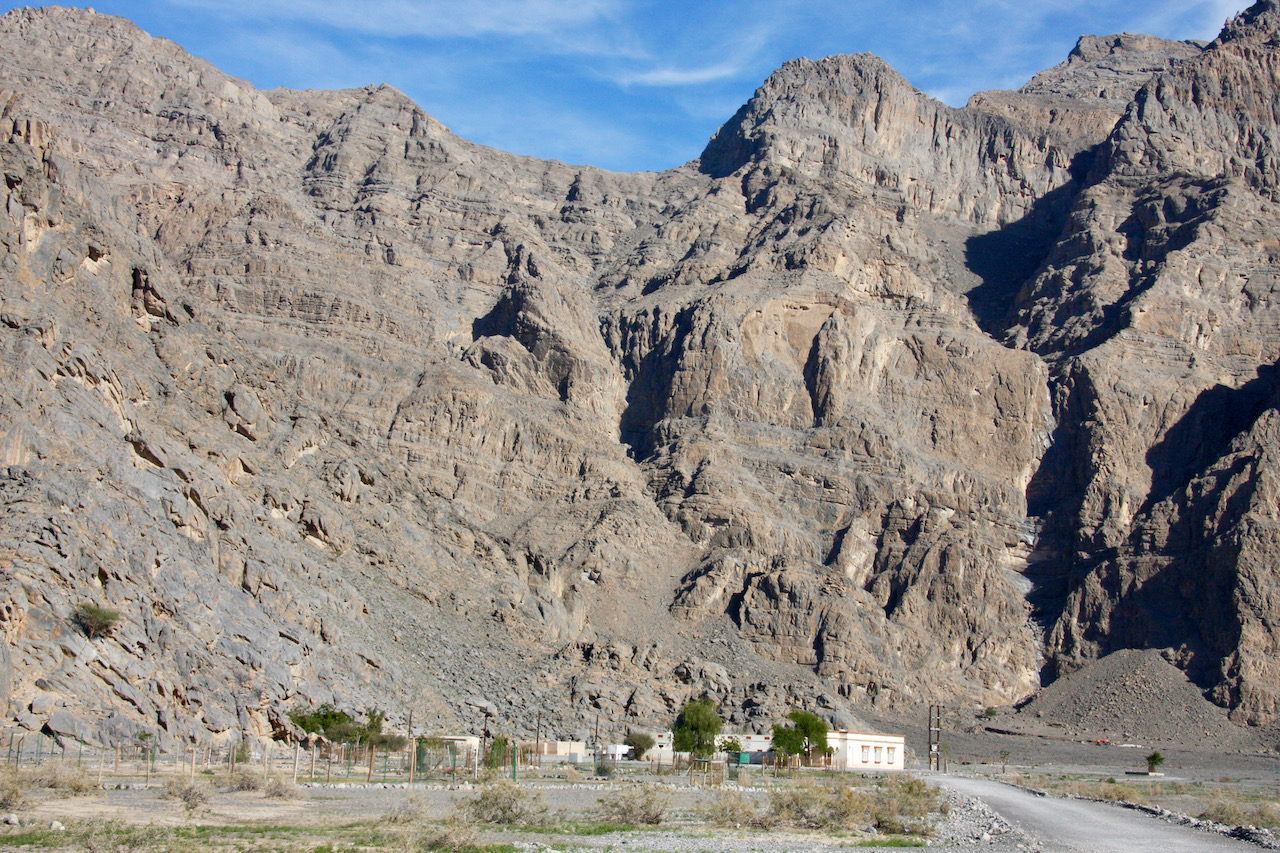
Much is made about the supposed affinity between dolphins and humans, and I have to admit that these one really seemed to enjoy racing the dhows.
There are two species at Musandam – the humpback dolphin and the bottlenose dolphin. The former is also known as the Chinese white dolphin, which we have seen in the waters around Hong Kong, where they tend to have a pink colour. I was intrigued to learn that this species has been spotted in the Mediterranean after some travelled along the Suez Canal.
After a number of runs with the dolphins the boat made a stop at Telegraph Island, a tiny patch of rock. It takes its name from a relay station built in 1864 that boosted messages passing along a telegraphic cable that connected London to Karachi, which was then part of British India.
Round the Bend
Blazing summer temperatures meant that conditions for the telegraph operators on the tiny, isolated island were harsh. It is said the phrase “round the bend”, ie going insane, originated here. The island is located round a bend in the fjord from Khasab, and the experience of being posted there supposedly drove some telegraph operators mad.
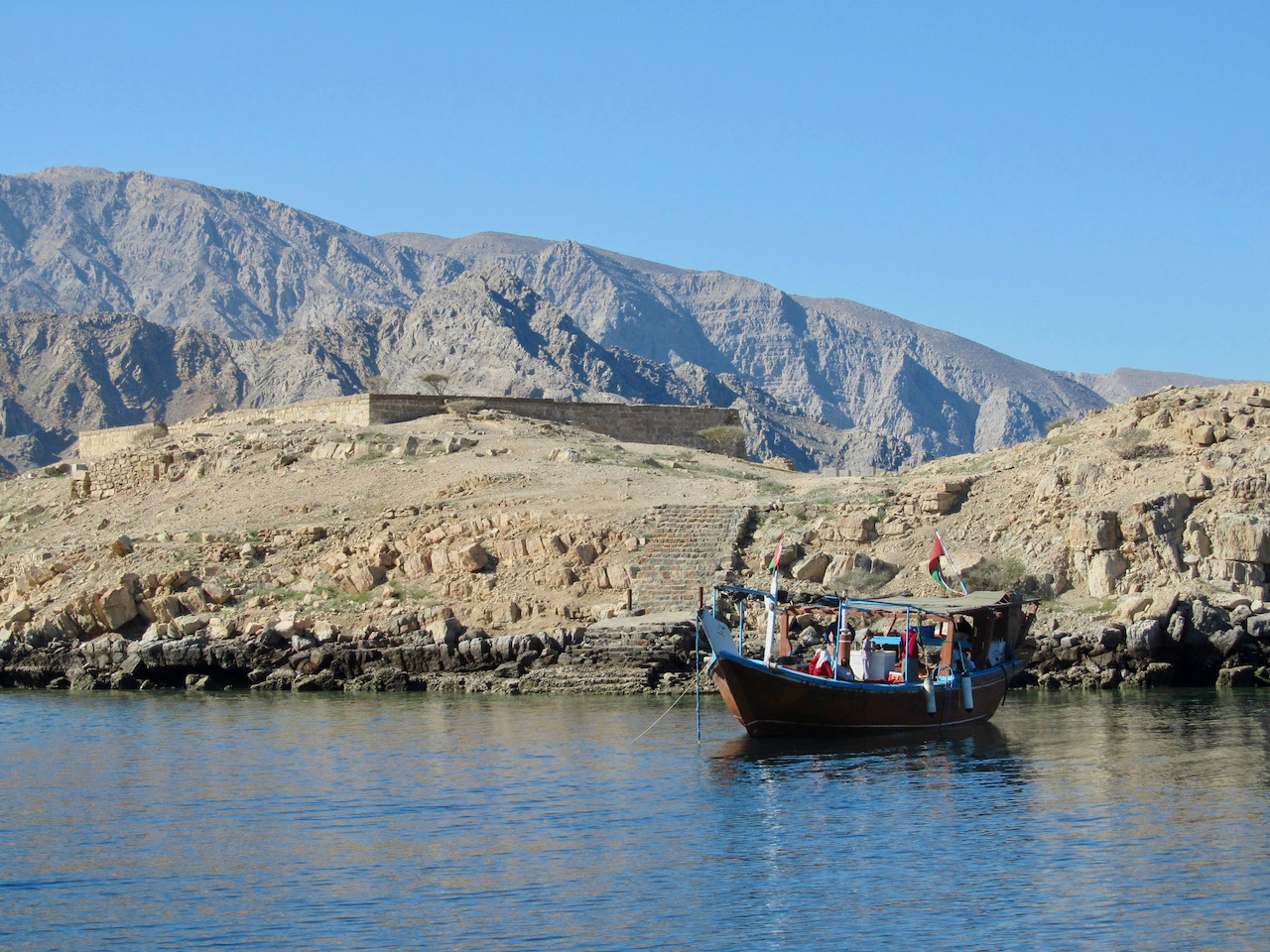
The relay station was abandoned in 1868 when the cable was rerouted, and today only the ruins of the buildings remain. It’s a popular spot for snorkelling where you can see lots of pretty yellow fish. I swam across from the boat to explore the island, and have to admit I wouldn’t have liked to be stationed there.
Then it was all aboard for the return trip to Khasab, and a last glimpse of the dolphins as we headed out of the fjord.
Verdict: One of the best days out you can have in this part of the world. We returned to Musandam several times to go on dhow cruises during our years living in Dubai.
Sign up for our FREE newsletter and never miss a post!
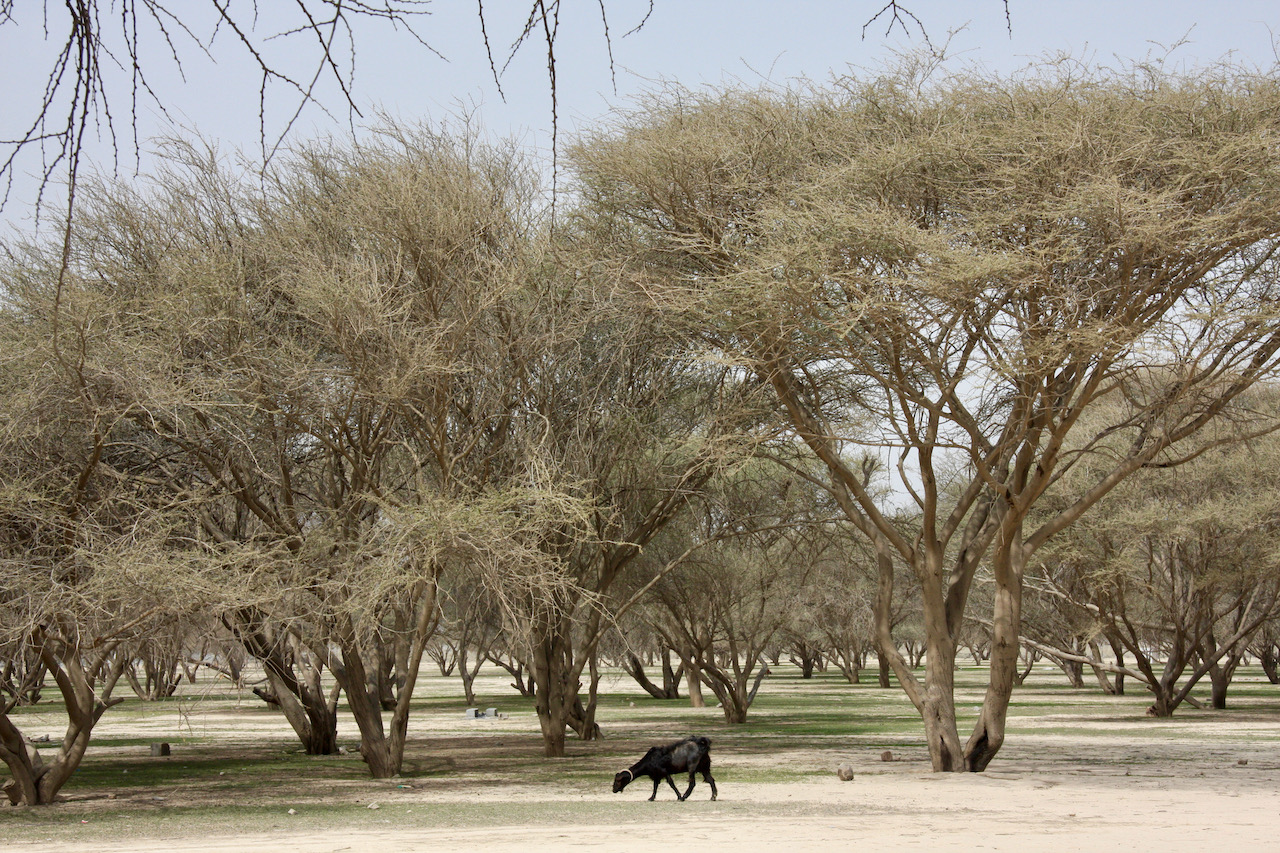
Acacia Trees, Goats and Smugglers
MOST of the mountainous peninsula is inaccessible by road, though you can take a short trip to a small acacia forest where friendly goats feast on the lower leaves. Another unusual tourist attraction is the sight of small, powerful speedboats used by smugglers who carry goats from Iran and take cigarettes and other goods back across the Strait of Hormuz. Some tour operators point the vessels out to visitors.


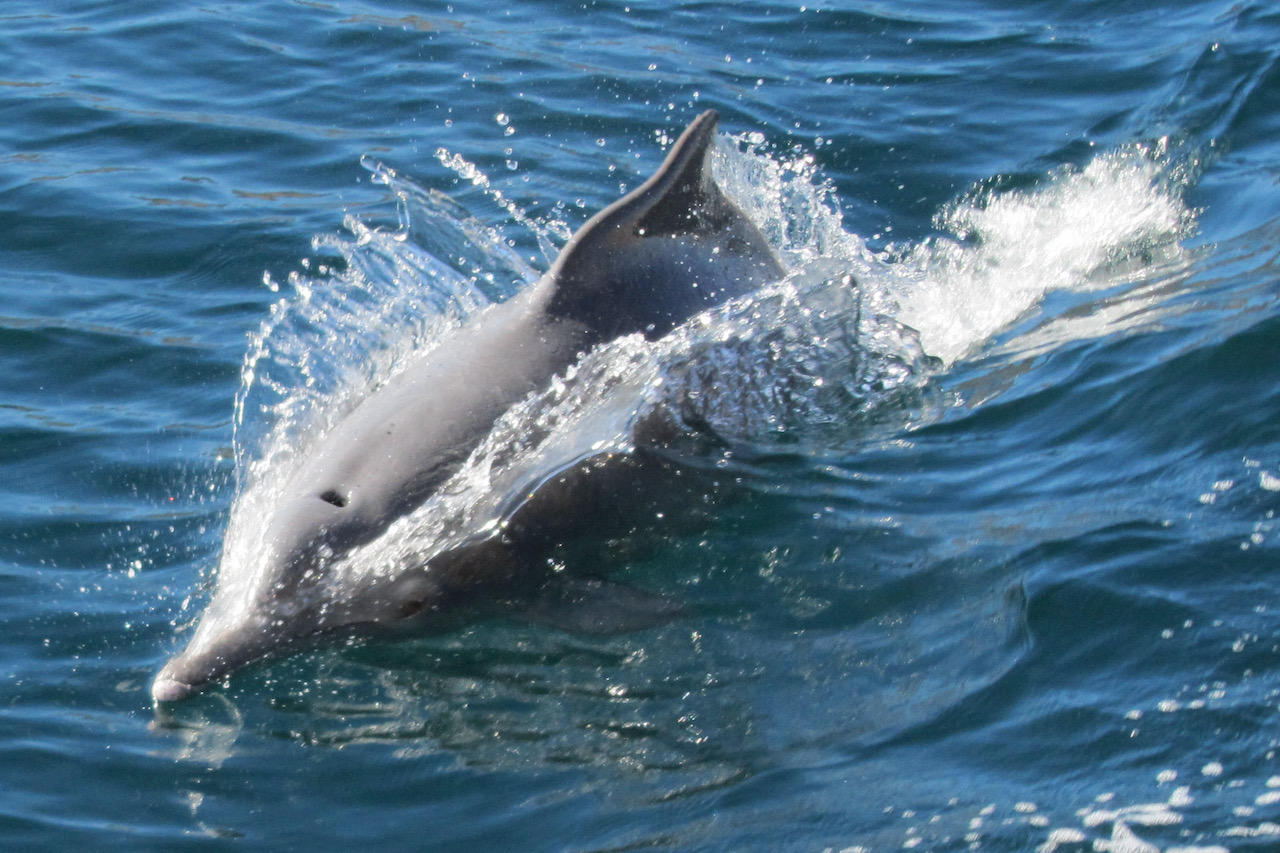

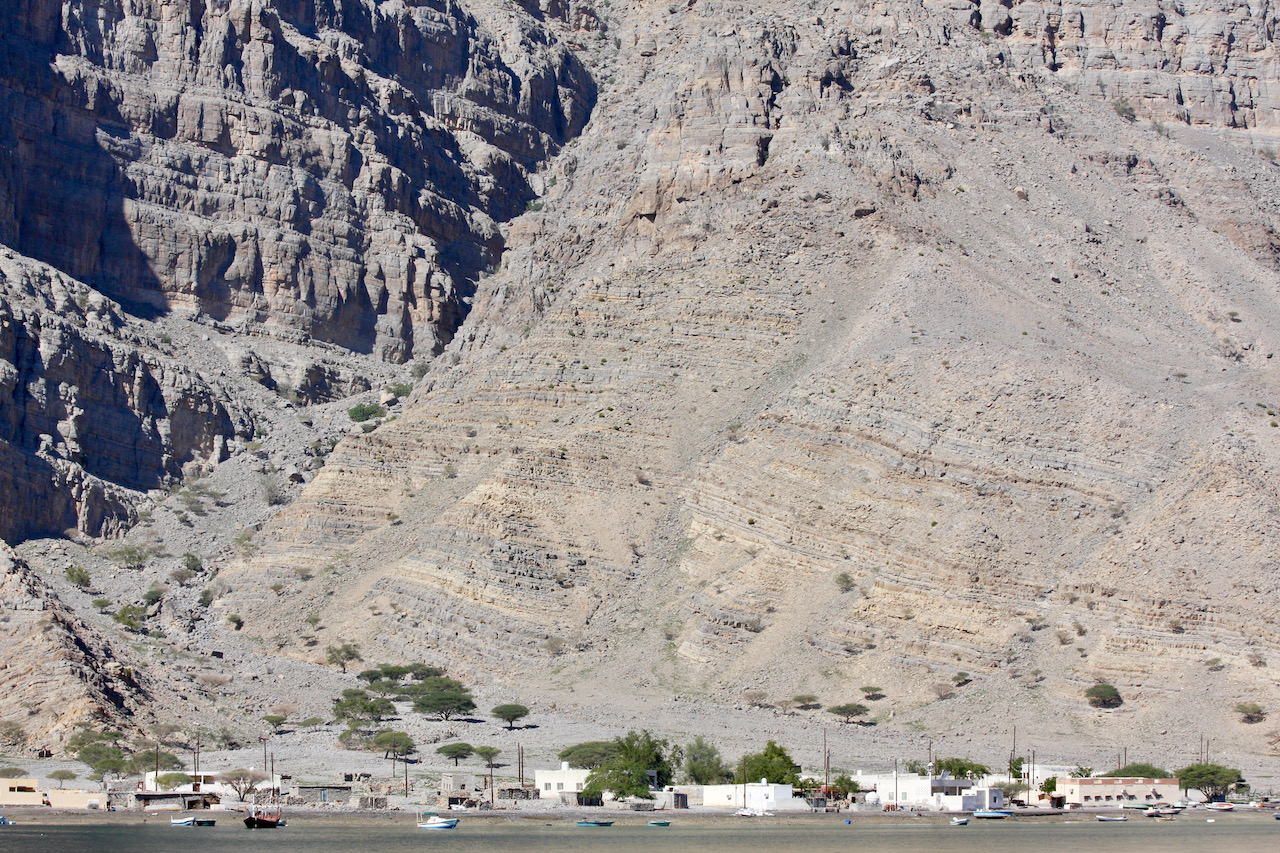
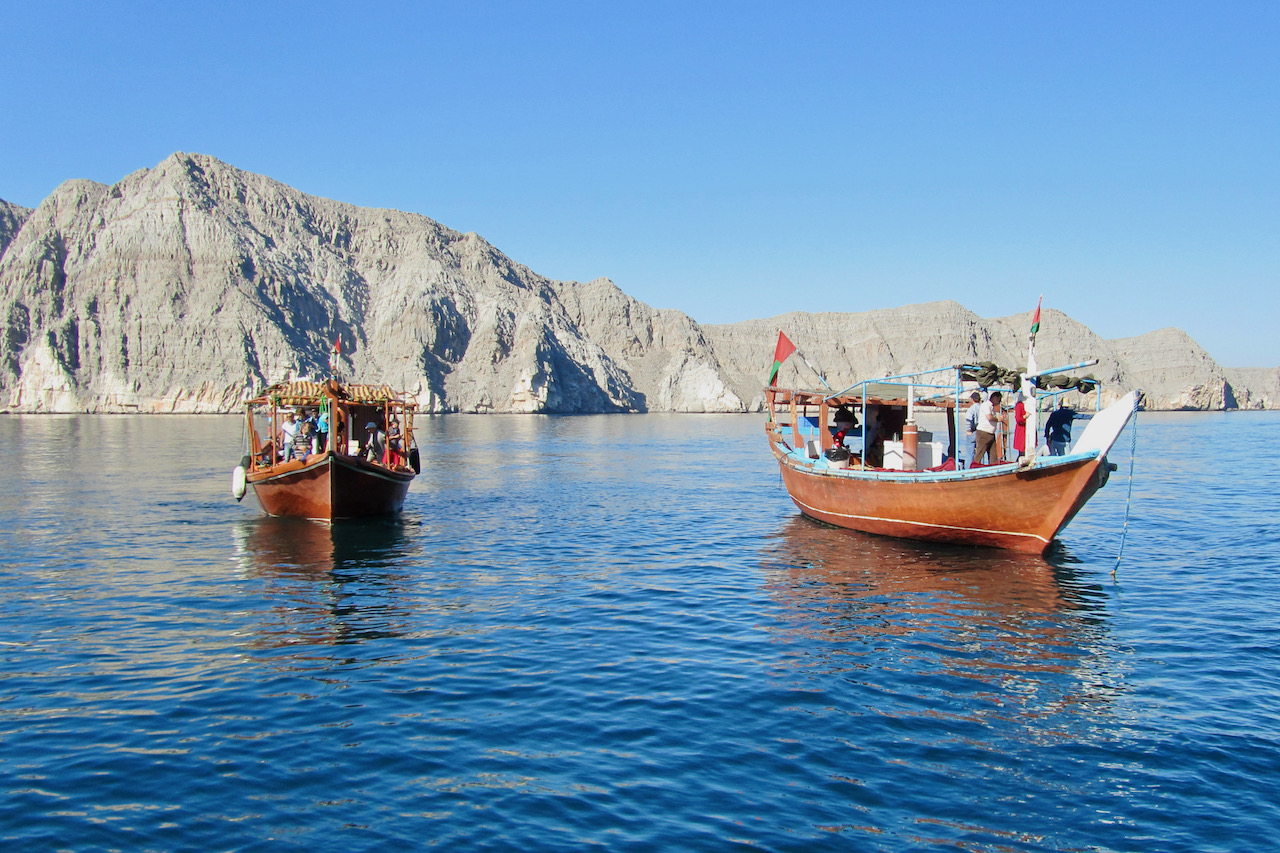
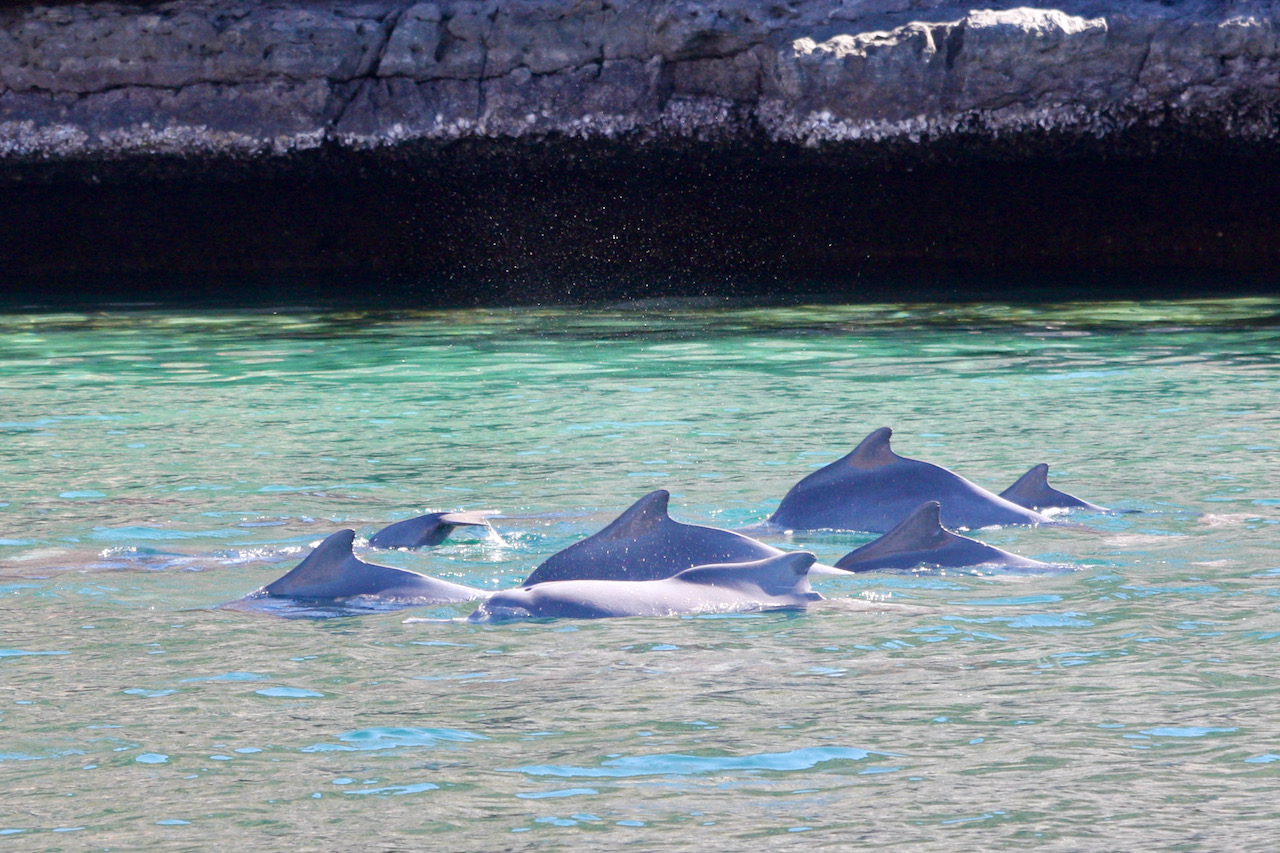
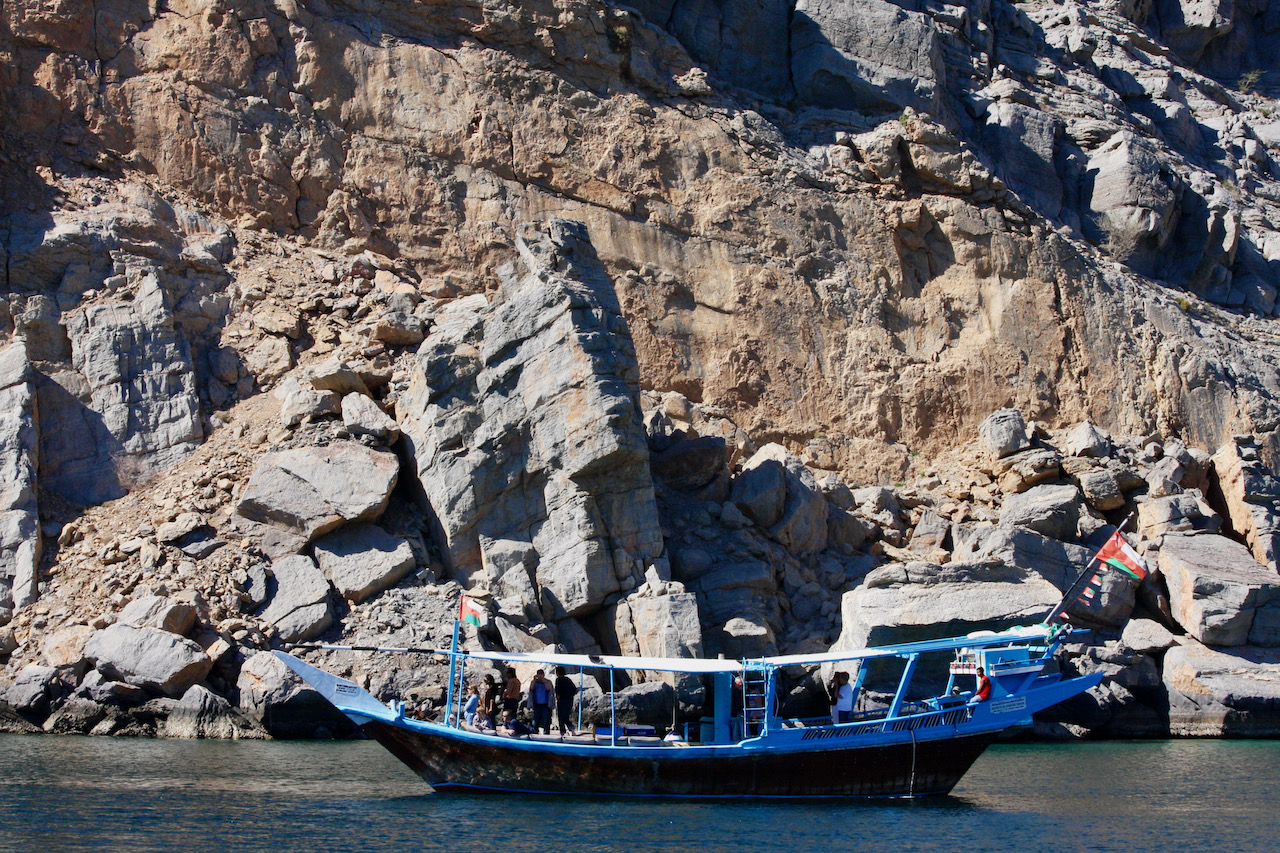
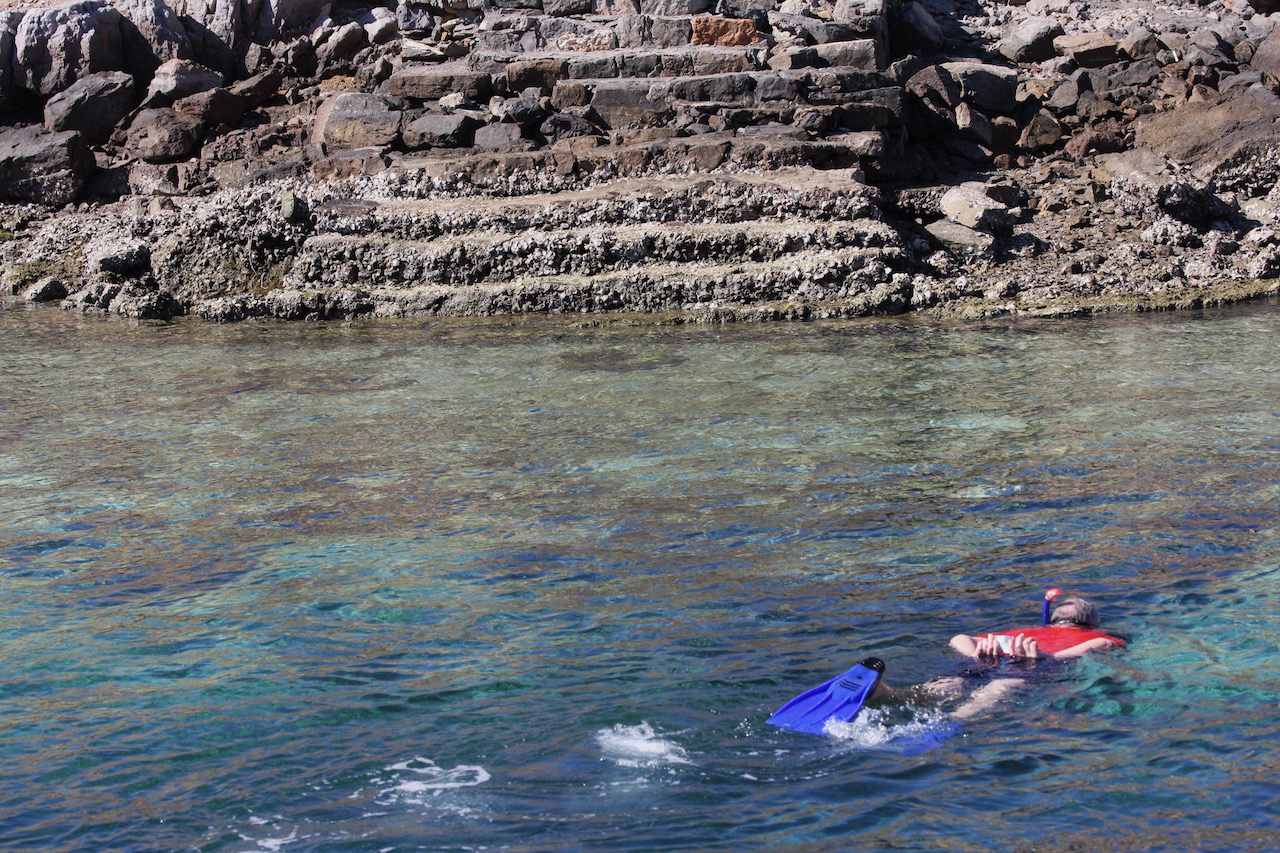
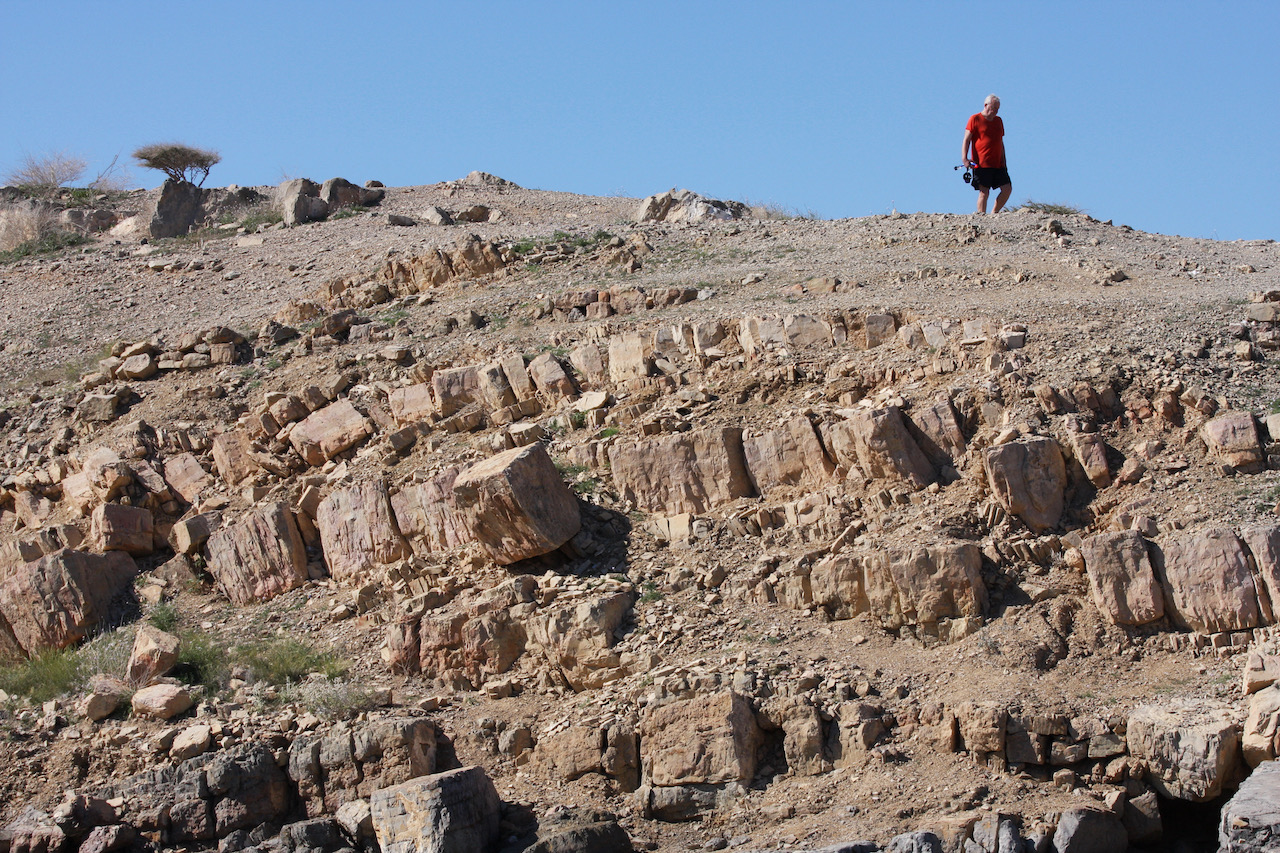
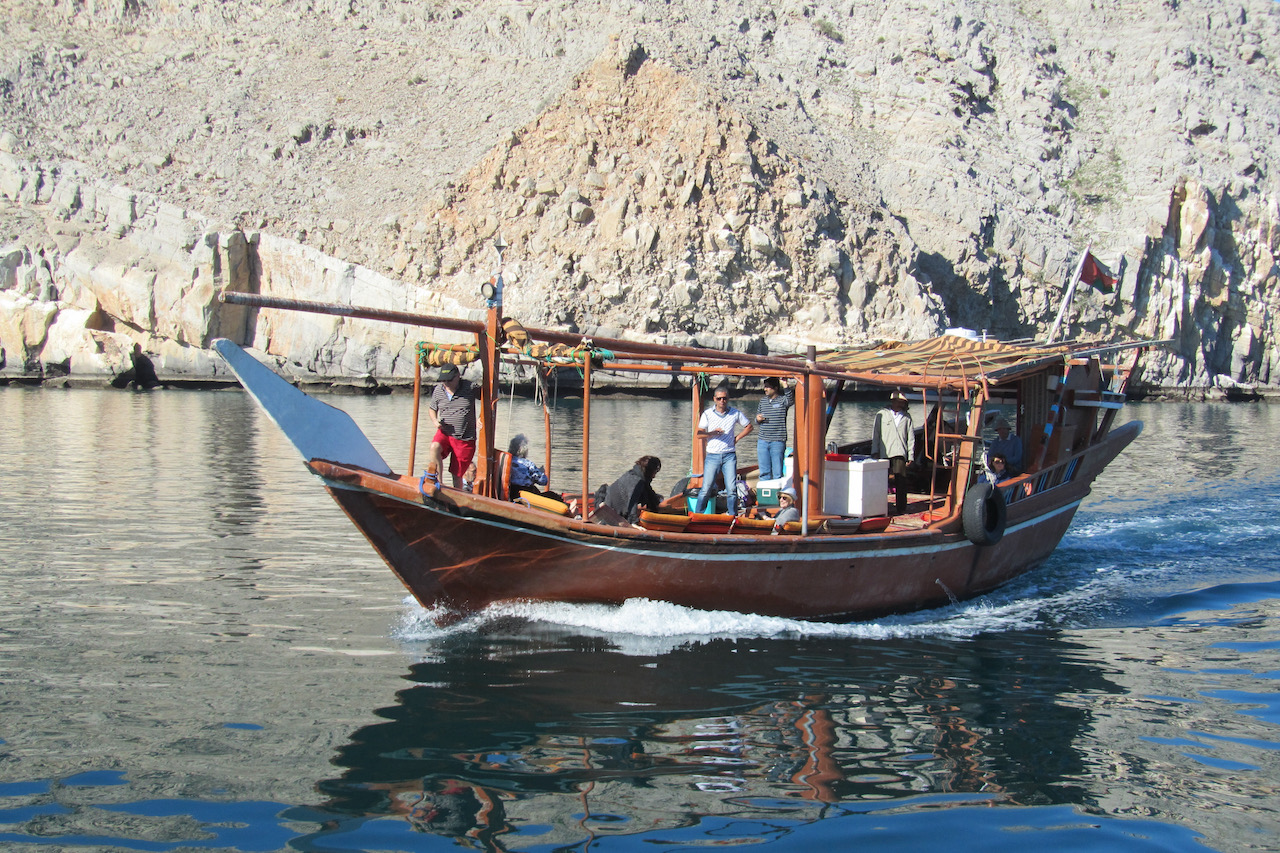


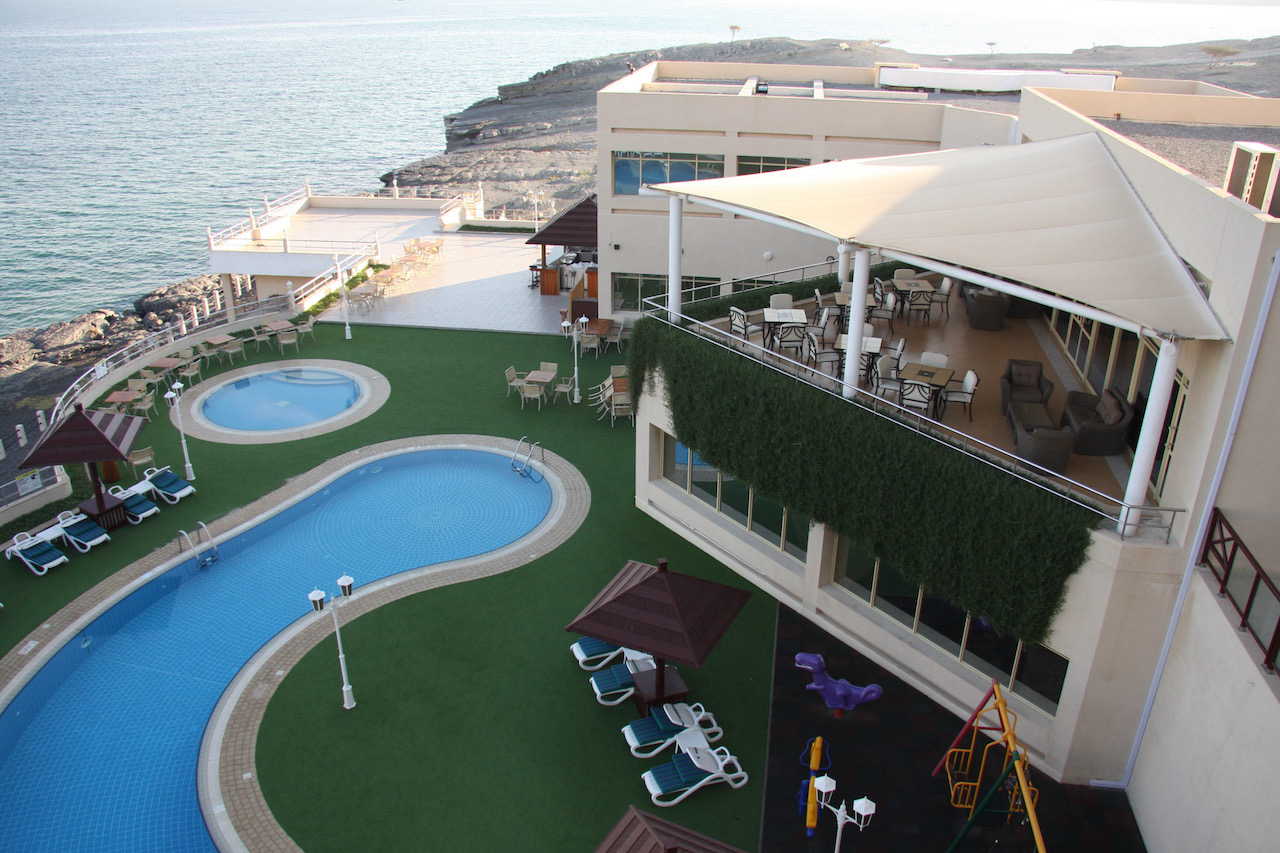
Where Are We on the Map?
THIS part of the Middle East was formerly controlled by the British, and they left a particularly messy geographical legacy. Though Musandam is part of Oman, it’s completely cut off from the rest of the country by the United Arab Emirates.
In Fujairah there’s an enclave of Oman called Madha – and inside that is an enclave of Sharjah called Nahwa. So you have a bit of Sharjah (UAE territory) inside a bit of Omani territory (Madha) that’s surrounded by Fujairah (UAE territory).
On the east coast of the UAE, within Fujairah, is the town of Khor Fakken, an enclave of Sharjah emirate, which is over on the west coast.
And further north on the border with Musandam is the town of Dibba – it’s split three ways between Oman, Fujairah and Sharjah. Way to go, cartographers of the British Empire!
NEED TO KNOW: Musandam
WHERE TO STAY: For many years the hotel now called the Atana Khasab (formerly the Golden Tulip) was virtually the only show in town. Though there are now other options in the capital, it still has the best position with spectacular views out to sea, and has been spruced up. Its sister property, the Atana Musandam, is an upmarket resort. Other possibilities include the Khasab Hotel and the Diwan Al Amir. You can camp on Bassa beach next to the Atana Khasab, though you might find insects a problem. Further afield, the Six Senses Zighy Bay is an exquisite five-star property at Dibba. It generated lots of publicity when it opened because guests can arrive by paraglider before heading for reception. Note that it’s on the east coast of the peninsula and is only accessible from the UAE, ie not from Khasab.
DHOW CRUISES: A number of tour companies offer these. Soft drinks, water and fruit are served. Remember to use sunscreen, and you’ll probably want to cool off in the sea so take your bathers. The boats leave from Khasab Port.
ENTRY REQUIREMENTS: Take your passport (minimum three-month validity). Visa rules change frequently, so seek up-to-date advice locally.
DRIVING: If you have a car, you’ll need Oman insurance, which is available at the border crossing if you don’t already have it. If you hire a car, check with the rental company that you’re allowed to take it to Musandam and are insured.
February 2021
MORE INFO
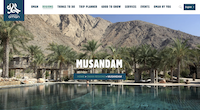 OMAN’S new official tourism site is a big improvement on its creaky predecessor, and the Musandam page has information about things to do. READ MORE
OMAN’S new official tourism site is a big improvement on its creaky predecessor, and the Musandam page has information about things to do. READ MORE
RELATED
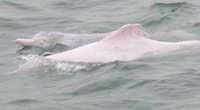 WATCHING PINK DOLPHINS: Yes, there really are pink dolphins in the waters around Hong Kong, and regular boat trips mean you can watch them frolicking… READ MORE
WATCHING PINK DOLPHINS: Yes, there really are pink dolphins in the waters around Hong Kong, and regular boat trips mean you can watch them frolicking… READ MORE
 GULF ARABS LOVE BIG CATS and other exotic animals, and many sheikhs have private zoos. Normally these places are strictly out of bounds, but Afaranwide managed to have a look inside. READ MORE
GULF ARABS LOVE BIG CATS and other exotic animals, and many sheikhs have private zoos. Normally these places are strictly out of bounds, but Afaranwide managed to have a look inside. READ MORE
 CALIFORNIA’S AMAZING WILDLIFE – GALLERY: Whales, elephant seals, elk, sea lions… California has all these and much, much more. But did you know that you can also find zebras grazing on the roadside in one part of the Golden State? READ MORE
CALIFORNIA’S AMAZING WILDLIFE – GALLERY: Whales, elephant seals, elk, sea lions… California has all these and much, much more. But did you know that you can also find zebras grazing on the roadside in one part of the Golden State? READ MORE
RECOMMENDED
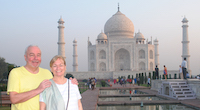 WELCOME TO OUR WORLD! Afaranwide’s home page – this is where you can find out about our latest posts and other highlights. READ MORE
WELCOME TO OUR WORLD! Afaranwide’s home page – this is where you can find out about our latest posts and other highlights. READ MORE
 TOP 10 VIRTUAL ATTRACTIONS: Many of the world’s most popular tourists sites are closed because of the coronavirus crisis, but you can still visit them virtually while you’re self-isolating. READ MORE
TOP 10 VIRTUAL ATTRACTIONS: Many of the world’s most popular tourists sites are closed because of the coronavirus crisis, but you can still visit them virtually while you’re self-isolating. READ MORE
 SHIMLA, QUEEN OF THE HILLS: Government officials once retreated to Shimla in the foothills of the Himalayas to escape India’s blazing hot summers. Now tourists make the same journey. READ MORE
SHIMLA, QUEEN OF THE HILLS: Government officials once retreated to Shimla in the foothills of the Himalayas to escape India’s blazing hot summers. Now tourists make the same journey. READ MORE
 TEN THINGS WE LEARNED: Our up-to-the-minute guide to creating a website, one step at a time. The costs, the mistakes – it’s what we wish we’d known when we started blogging. READ MORE
TEN THINGS WE LEARNED: Our up-to-the-minute guide to creating a website, one step at a time. The costs, the mistakes – it’s what we wish we’d known when we started blogging. READ MORE
 TROUBLED TIMES FOR EXPATS: Moving abroad can seem an idyllic prospect, but what happens when sudden upheavals or the inescapable realities of life intrude? READ MORE
TROUBLED TIMES FOR EXPATS: Moving abroad can seem an idyllic prospect, but what happens when sudden upheavals or the inescapable realities of life intrude? READ MORE
Disclosure: Afaranwide is an affiliate of leading travel operators such as Booking.com and Japan Rail Pass. If you purchase through our site we receive, at no additional cost to you, a small commission. We only work with companies we have used and recommend.
LET'S KEEP IN TOUCH!
Fjords, in the
Middle East?

COLIN SIMPSON
Racing Dolphins in a Dhow at the Strait of Hormuz
Musandam Peninsula, Oman
IF YOU hear the word “fjord” the chances are you think of a chilly waterway in Norway bordered on both sides by steep cliffs. Close your eyes and you can imagine seeing your breath as you exhale in the cold air.
On the other hand, the words “Middle East” usually conjure up images of sandy deserts seared by a blazing sun, plus camels and gleaming cities built with petrodollars.
So it might come as a surprise to learn that there are in fact fjords in the Middle East. A fjord is defined by National Geographic as a “long, deep, narrow body of water that reaches far inland… with steep walls of rock on either side… Fjords were created by glaciers.”


In addition to Norway, they are found in Chile, New Zealand, Canada, Greenland, and Alaska. The Middle East ones – known as khors – are in Musandam, Oman. Though you may not recognise the name, if you’ve watched the news or read a paper in the past 25 years you’ll know about this part of the world.
For Musandam is a peninsula that juts out into the Strait of Hormuz, the strategically vital waterway through which a fifth of the world’s oil passes on its way from the Gulf to world markets. On the opposite shore is Iran, and the waterway has frequently been a flashpoint amid the fluctuating relations between that country and the West.
But there’s a happier side to Musandam. It’s a popular diving area, though tricky currents mean it’s no place for beginners. And then there are those fjords, where day trippers and holidaymakers can race dolphins aboard a traditional Arabian vessel known as a dhow before going snorkelling or enjoying a relaxing lunch.
Popular Getaway
It’s a popular weekend getaway for expats in Dubai, and might also appeal to tourists who want to see more of the region than shopping malls and glitzy hotels.
To get there from Dubai you have to drive through four of the UAE’s other emirates – Sharjah, Ajman, Umm al Quwain and Ras al Khaimah. These, along with Fujairah, make up the Northern Emirates, the poor relations of Dubai and oil-rich Abu Dhabi. The final jolting stretch of the two-and-a-half hour journey takes you past cement factories on roads that have been churned up by the wheels of heavy trucks.

But as soon as you cross the border into Oman you find yourself on a fabulous coastal road with terrific views that takes you to Khasab, the main town. That’s where the dhows leave from, and you can go on a half-day excursion, or have a full day with lunch.
You’ll find the dhows lined up side-by-side in the port, and you’ll probably have to step across several to reach the one you’ve booked. Once everyone has arrived, the boat heads off. The cruises take you to Khor Ash Sham, the most easily accessible fjord from Khasab. It can get a bit crowded at times, like when several dive boats gather at the same site, though the dhows are attractive so this doesn’t spoil the experience.
The mood is relaxed, and we’ve always found the crews welcoming and keen to talk about the way of life in the remote peninsula. The scenery is striking as you head into the mouth of the fjord, with rock walls rising on either side that protect the waters of the inlet if the sea outside is rough.
Small Villages
We passed a number of small villages on the shore that were backed by imposing cliffs. A helpful English-speaking crew member explained that these could only be reached by boat, and the children were taken to Khasab to attend school each week before returning home at the weekend. Most of the villagers make their living from fishing. It was hard to imagine what it would be like to grow up and live in such a remote place, and difficult, also, to remember that Dubai’s gleaming towers were less than three hours’ drive away.
Then there were the dolphins! We spotted a few as we made our way through the fjord. After a while the captain lined the boat up towards one end of the waterway, then gunned the engine. As we sped along dolphins would approach and race alongside. It was a fun experience.

Much is made about the supposed affinity between dolphins and humans, and I have to admit that these one really seemed to enjoy racing the dhows.
There are two species at Musandam – the humpback dolphin and the bottlenose dolphin. The former is also known as the Chinese white dolphin, which we have seen in the waters around Hong Kong, where they tend to have a pink colour. I was intrigued to learn that this species has been spotted in the Mediterranean after some travelled along the Suez Canal.
After a number of runs with the dolphins the boat made a stop at Telegraph Island, a tiny patch of rock. It takes its name from a relay station built in 1864 that boosted messages passing along a telegraphic cable that connected London to Karachi, which was then part of British India.
Round the Bend
Blazing summer temperatures meant that conditions for the telegraph operators on the tiny, isolated island were harsh. It is said the phrase “round the bend”, ie going insane, originated here. The island is located round a bend in the fjord from Khasab, and the experience of being posted there supposedly drove some telegraph operators mad.

The relay station was abandoned in 1868 when the cable was rerouted, and today only the ruins of the buildings remain. It’s a popular spot for snorkelling where you can see lots of pretty yellow fish. I swam across from the boat to explore the island, and have to admit I wouldn’t have liked to be stationed there.
Then it was all aboard for the return trip to Khasab, and a last glimpse of the dolphins as we headed out of the fjord.
Verdict: One of the best days out you can have in this part of the world. We returned to Musandam several times to go on dhow cruises during our years living in Dubai.
Sign up for our FREE newsletter and never miss a post!

Acacia Trees, Goats and Smugglers
MOST of the mountainous peninsula is inaccessible by road, though you can take a short trip to a small acacia forest where friendly goats feast on the lower leaves. Another unusual tourist attraction is the sight of small, powerful speedboats used by smugglers who carry goats from Iran and take cigarettes and other goods back across the Strait of Hormuz. Some tour operators point the vessels out to visitors.














Where Are We on the Map?
THIS part of the Middle East was formerly controlled by the British, and they left a particularly messy geographical legacy. Though Musandam is part of Oman, it’s completely cut off from the rest of the country by the United Arab Emirates.
In Fujairah there’s an enclave of Oman called Madha – and inside that is an enclave of Sharjah called Nahwa. So you have a bit of Sharjah (UAE territory) inside a bit of Omani territory (Madha) that’s surrounded by Fujairah (UAE territory).
On the east coast of the UAE, within Fujairah, is the town of Khor Fakken, an enclave of Sharjah emirate, which is over on the west coast.
And further north on the border with Musandam is the town of Dibba – it’s split three ways between Oman, Fujairah and Sharjah. Way to go, cartographers of the British Empire!
NEED TO KNOW: Musandam
WHERE TO STAY: For many years the hotel now called the Atana Khasab (formerly the Golden Tulip) was virtually the only show in town. Though there are now other options in the capital, it still has the best position with spectacular views out to sea, and has been spruced up. Its sister property, the Atana Musandam, is an upmarket resort. Other possibilities include the Khasab Hotel and the Diwan Al Amir. You can camp on Bassa beach next to the Atana Khasab, though you might find insects a problem. Further afield, the Six Senses Zighy Bay is an exquisite five-star property at Dibba. It generated lots of publicity when it opened because guests can arrive by paraglider before heading for reception. Note that it’s on the east coast of the peninsula and is only accessible from the UAE, ie not from Khasab.
DHOW CRUISES: A number of tour companies offer these. Soft drinks, water and fruit are served. Remember to use sunscreen, and you’ll probably want to cool off in the sea so take your bathers. The boats leave from Khasab Port.
ENTRY REQUIREMENTS: Take your passport (minimum three-month validity). Visa rules change frequently, so seek up-to-date advice locally.
DRIVING: If you have a car, you’ll need Oman insurance, which is available at the border crossing if you don’t already have it. If you hire a car, check with the rental company that you’re allowed to take it to Musandam and are insured.
February 2021
MORE INFO
 OMAN’S new official tourism site is a big improvement on its creaky predecessor, and the Musandam page has information about things to do. READ MORE
OMAN’S new official tourism site is a big improvement on its creaky predecessor, and the Musandam page has information about things to do. READ MORE
RELATED
 WATCHING PINK DOLPHINS: Yes, there really are pink dolphins in the waters around Hong Kong, and regular boat trips mean you can watch them frolicking… READ MORE
WATCHING PINK DOLPHINS: Yes, there really are pink dolphins in the waters around Hong Kong, and regular boat trips mean you can watch them frolicking… READ MORE
 GULF ARABS LOVE BIG CATS and other exotic animals, and many sheikhs have private zoos. Normally these places are strictly out of bounds, but Afaranwide managed to have a look inside. READ MORE
GULF ARABS LOVE BIG CATS and other exotic animals, and many sheikhs have private zoos. Normally these places are strictly out of bounds, but Afaranwide managed to have a look inside. READ MORE
 CALIFORNIA’S AMAZING WILDLIFE – GALLERY: Whales, elephant seals, elk, sea lions… California has all these and much, much more. But did you know that you can also find zebras grazing on the roadside in one part of the Golden State? READ MORE
CALIFORNIA’S AMAZING WILDLIFE – GALLERY: Whales, elephant seals, elk, sea lions… California has all these and much, much more. But did you know that you can also find zebras grazing on the roadside in one part of the Golden State? READ MORE
RECOMMENDED
 WELCOME TO OUR WORLD! Afaranwide’s home page – this is where you can find out about our latest posts and other highlights. READ MORE
WELCOME TO OUR WORLD! Afaranwide’s home page – this is where you can find out about our latest posts and other highlights. READ MORE
 TOP 10 VIRTUAL ATTRACTIONS: Many of the world’s most popular tourists sites are closed because of the coronavirus crisis, but you can still visit them virtually while you’re self-isolating. READ MORE
TOP 10 VIRTUAL ATTRACTIONS: Many of the world’s most popular tourists sites are closed because of the coronavirus crisis, but you can still visit them virtually while you’re self-isolating. READ MORE
 SHIMLA, QUEEN OF THE HILLS: Government officials once retreated to Shimla in the foothills of the Himalayas to escape India’s blazing hot summers. Now tourists make the same journey. READ MORE
SHIMLA, QUEEN OF THE HILLS: Government officials once retreated to Shimla in the foothills of the Himalayas to escape India’s blazing hot summers. Now tourists make the same journey. READ MORE
 TEN THINGS WE LEARNED: Our up-to-the-minute guide to creating a website, one step at a time. The costs, the mistakes – it’s what we wish we’d known when we started blogging. READ MORE
TEN THINGS WE LEARNED: Our up-to-the-minute guide to creating a website, one step at a time. The costs, the mistakes – it’s what we wish we’d known when we started blogging. READ MORE
 TROUBLED TIMES FOR EXPATS: Moving abroad can seem an idyllic prospect, but what happens when sudden upheavals or the inescapable realities of life intrude? READ MORE
TROUBLED TIMES FOR EXPATS: Moving abroad can seem an idyllic prospect, but what happens when sudden upheavals or the inescapable realities of life intrude? READ MORE
Disclosure: Afaranwide is an affiliate of leading travel operators such as Booking.com and Japan Rail Pass. If you purchase through our site we receive, at no additional cost to you, a small commission. We only work with companies we have used and recommend.
LET'S KEEP IN TOUCH!
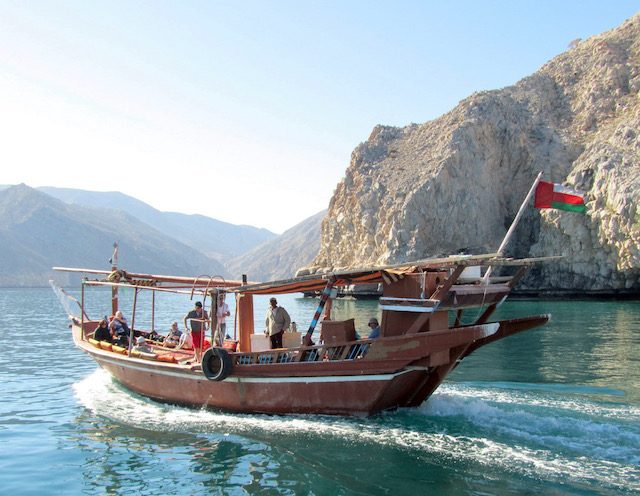

COLIN SIMPSON
Fjords, in the
Middle East?
Racing Dolphins in a Dhow
at the Strait of Hormuz
Musandam Peninsula, Oman
IF YOU hear the word “fjord” the chances are you think of a chilly waterway in Norway bordered on both sides by steep cliffs. Close your eyes and you can imagine seeing your breath as you exhale in the cold air.
On the other hand, the words “Middle East” usually conjure up images of sandy deserts seared by a blazing sun, plus camels and gleaming cities built with petrodollars.
So it might come as a surprise to learn that there are in fact fjords in the Middle East. A fjord is defined by National Geographic as a “long, deep, narrow body of water that reaches far inland… with steep walls of rock on either side… Fjords were created by glaciers.”


In addition to Norway, they are found in Chile, New Zealand, Canada, Greenland, and Alaska. The Middle East ones – known as khors – are in Musandam, Oman. Though you may not recognise the name, if you’ve watched the news or read a paper in the past 25 years you’ll know about this part of the world.
For Musandam is a peninsula that juts out into the Strait of Hormuz, the strategically vital waterway through which a fifth of the world’s oil passes on its way from the Gulf to world markets. On the opposite shore is Iran, and the waterway has frequently been a flashpoint amid the fluctuating relations between that country and the West.
But there’s a happier side to Musandam. It’s a popular diving area, though tricky currents mean it’s no place for beginners. And then there are those fjords, where day trippers and holidaymakers can race dolphins aboard a traditional Arabian vessel known as a dhow before going snorkelling or enjoying a relaxing lunch.
Popular Getaway
It’s a popular weekend getaway for expats in Dubai, and might also appeal to tourists who want to see more of the region than shopping malls and glitzy hotels.
To get there from Dubai you have to drive through four of the UAE’s other emirates – Sharjah, Ajman, Umm al Quwain and Ras al Khaimah. These, along with Fujairah, make up the Northern Emirates, the poor relations of Dubai and oil-rich Abu Dhabi. The final jolting stretch of the two-and-a-half hour journey takes you past cement factories on roads that have been churned up by the wheels of heavy trucks.

But as soon as you cross the border into Oman you find yourself on a fabulous coastal road with terrific views that takes you to Khasab, the main town. That’s where the dhows leave from, and you can go on a half-day excursion, or have a full day with lunch.
You’ll find the dhows lined up side-by-side in the port, and you’ll probably have to step across several to reach the one you’ve booked. Once everyone has arrived, the boat heads off. The cruises take you to Khor Ash Sham, the most easily accessible fjord from Khasab. It can get a bit crowded at times, like when several dive boats gather at the same site, though the dhows are attractive so this doesn’t spoil the experience.
The mood is relaxed, and we’ve always found the crews welcoming and keen to talk about the way of life in the remote peninsula. The scenery is striking as you head into the mouth of the fjord, with rock walls rising on either side that protect the waters of the inlet if the sea outside is rough.
Small Villages
We passed a number of small villages on the shore that were backed by imposing cliffs. A helpful English-speaking crew member explained that these could only be reached by boat, and the children were taken to Khasab to attend school each week before returning home at the weekend.
Most of the villagers make their living from fishing. It was hard to imagine what it would be like to grow up and live in such a remote place, and difficult, also, to remember that Dubai’s gleaming towers were less than three hours’ drive away.
Then there were the dolphins! We spotted a few as we made our way through the fjord. After a while the captain lined the boat up towards one end of the waterway, then gunned the engine. As we sped along dolphins would approach and race alongside. It was a fun experience.

Much is made about the supposed affinity between dolphins and humans, and I have to admit that these one really seemed to enjoy racing the dhows.
There are two species at Musandam – the humpback dolphin and the bottlenose dolphin. The former is also known as the Chinese white dolphin, which we have seen in the waters around Hong Kong, where they tend to have a pink colour. I was intrigued to learn that this species has been spotted in the Mediterranean after some travelled along the Suez Canal.
After a number of runs with the dolphins the boat made a stop at Telegraph Island, a tiny patch of rock. It takes its name from a relay station built in 1864 that boosted messages passing along a telegraphic cable that connected London to Karachi, which was then part of British India.
Round the Bend
Blazing summer temperatures meant that conditions for the telegraph operators on the tiny, isolated island were harsh. It is said the phrase “round the bend”, ie going insane, originated here. The island is located round a bend in the fjord from Khasab, and the experience of being posted there supposedly drove some telegraph operators mad.

The relay station was abandoned in 1868 when the cable was rerouted, and today only the ruins of the buildings remain. It’s a popular spot for snorkelling where you can see lots of pretty yellow fish. I swam across from the boat to explore the island, and have to admit I wouldn’t have liked to be stationed there.
Then it was all aboard for the return trip to Khasab, and a last glimpse of the dolphins as we headed out of the fjord.
Verdict: One of the best days out you can have in this part of the world. We returned to Musandam several times to go on dhow cruises during our years living in Dubai.
Sign up for our FREE newsletter and never miss a post!
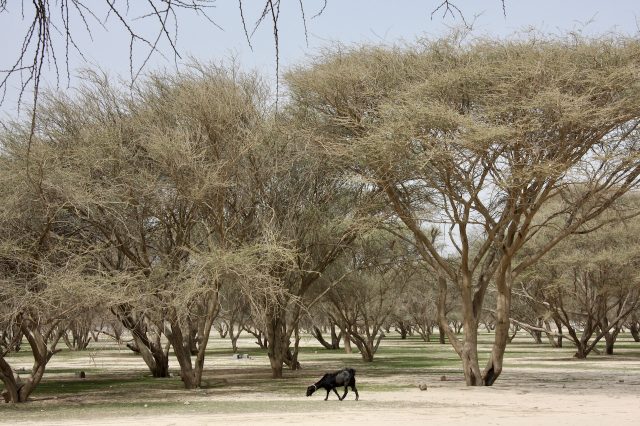
Acacia Trees, Goats and Smugglers
MOST of the mountainous peninsula is inaccessible by road, though you can take a short trip to a small acacia forest where friendly goats feast on the lower leaves.
Another unusual tourist attraction is the sight of small, powerful speedboats used by smugglers who carry goats from Iran and take cigarettes and other goods back across the Strait of Hormuz. Some tour operators point the vessels out to visitors.













Where Are We on the Map?
THIS part of the Middle East was formerly controlled by the British, and they left a particularly messy geographical legacy. Though Musandam is part of Oman, it’s completely cut off from the rest of the country by the United Arab Emirates.
In Fujairah there’s an enclave of Oman called Madha – and inside that is an enclave of Sharjah called Nahwa. So you have a bit of Sharjah (UAE territory) inside a bit of Omani territory (Madha) that’s surrounded by Fujairah (UAE territory).
On the east coast of the UAE, within Fujairah, is the town of Khor Fakken, an enclave of Sharjah emirate, which is over on the west coast.
And further north on the border with Musandam is the town of Dibba – it’s split three ways between Oman, Fujairah and Sharjah. Way to go, cartographers of the British Empire!
NEED TO KNOW: Musandam
WHERE TO STAY: For many years the hotel now called the Atana Khasab (formerly the Golden Tulip) was virtually the only show in town. Though there are now other options in the capital, it still has the best position with spectacular views out to sea, and has been spruced up.
Its sister property, the Atana Musandam, is an upmarket resort. Other possibilities include the Khasab Hotel and the Diwan Al Amir. You can camp on Bassa beach next to the Atana Khasab, though you might find insects a problem.
Further afield, the Six Senses Zighy Bay is an exquisite five-star property at Dibba. It generated lots of publicity when it opened because guests can arrive by paraglider before heading for reception. Note that it’s on the east coast of the peninsula and is only accessible from the UAE, ie not from Khasab.
DHOW CRUISES: A number of tour companies offer these. Soft drinks, water and fruit are served. Remember to use sunscreen, and you’ll probably want to cool off in the sea so take your bathers. The boats leave from Khasab Port.
ENTRY REQUIREMENTS: Take your passport (minimum three-month validity). Visa rules change frequently, so seek up-to-date advice locally.
DRIVING: If you have a car, you’ll need Oman insurance, which is available at the border crossing if you don’t already have it. If you hire a car, check with the rental company that you’re allowed to take it to Musandam and are insured.
February 2021
MORE INFO
OMAN’S new official tourism site is a big improvement on its creaky predecessor, and the Musandam page has information about things to do. READ MORE
RELATED
 WATCHING PINK DOLPHINS: Yes, there really are pink dolphins in the waters around Hong Kong, and regular boat trips mean you can watch them frolicking… READ MORE
WATCHING PINK DOLPHINS: Yes, there really are pink dolphins in the waters around Hong Kong, and regular boat trips mean you can watch them frolicking… READ MORE
 GULF ARABS LOVE BIG CATS and other exotic animals, and many sheikhs have private zoos. Normally these places are strictly out of bounds, but Afaranwide managed to have a look inside. READ MORE
GULF ARABS LOVE BIG CATS and other exotic animals, and many sheikhs have private zoos. Normally these places are strictly out of bounds, but Afaranwide managed to have a look inside. READ MORE
 CALIFORNIA’S AMAZING WILDLIFE – GALLERY: Whales, elephant seals, elk, sea lions… California has all these and much, much more. But did you know that you can also find zebras grazing on the roadside in one part of the Golden State? READ MORE
CALIFORNIA’S AMAZING WILDLIFE – GALLERY: Whales, elephant seals, elk, sea lions… California has all these and much, much more. But did you know that you can also find zebras grazing on the roadside in one part of the Golden State? READ MORE
RECOMMENDED
 WELCOME TO OUR WORLD! Afaranwide’s home page – this is where you can find out about our latest posts and other highlights. READ MORE
WELCOME TO OUR WORLD! Afaranwide’s home page – this is where you can find out about our latest posts and other highlights. READ MORE
 TOP 10 VIRTUAL ATTRACTIONS: Many of the world’s most popular tourists sites are closed because of the coronavirus crisis, but you can still visit them virtually while you’re self-isolating. READ MORE
TOP 10 VIRTUAL ATTRACTIONS: Many of the world’s most popular tourists sites are closed because of the coronavirus crisis, but you can still visit them virtually while you’re self-isolating. READ MORE
 SHIMLA, QUEEN OF THE HILLS: Government officials once retreated to Shimla in the foothills of the Himalayas to escape India’s blazing hot summers. Now tourists make the same journey. READ MORE
SHIMLA, QUEEN OF THE HILLS: Government officials once retreated to Shimla in the foothills of the Himalayas to escape India’s blazing hot summers. Now tourists make the same journey. READ MORE
 TEN THINGS WE LEARNED: Our up-to-the-minute guide to creating a website, one step at a time. The costs, the mistakes – it’s what we wish we’d known when we started blogging. READ MORE
TEN THINGS WE LEARNED: Our up-to-the-minute guide to creating a website, one step at a time. The costs, the mistakes – it’s what we wish we’d known when we started blogging. READ MORE
 TROUBLED TIMES FOR EXPATS: Moving abroad can seem an idyllic prospect, but what happens when sudden upheavals or the inescapable realities of life intrude? READ MORE
TROUBLED TIMES FOR EXPATS: Moving abroad can seem an idyllic prospect, but what happens when sudden upheavals or the inescapable realities of life intrude? READ MORE
Disclosure: Afaranwide is an affiliate of leading travel operators such as Booking.com and Japan Rail Pass. If you purchase through our site we receive, at no additional cost to you, a small commission. We only work with companies we have used and recommend.




Wonderful post. Loved the detail, the useful info and the beautiful photos! One thing if I may, it would be great to know what’s the best time of the year to watch dolphins in the Musandam peninsula. Any advice? Thank you 🙂
Hi Elsie, thanks for the comment. Best time is from around September to March. Avoid high summer when temperatures can hit 50C and the heat bounces off the walls of the fjords. – Colin